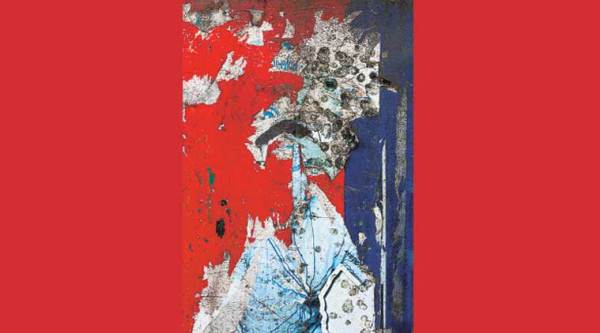Swedish photographer Reg Fallah composes paan-drenched walls into art
Swedish photographer Reg Fallah’s images of public walls across India urges audiences to take a closer look at the concrete screens we look past everyday.
 Fallah’s photograph of a wall in Ahmedabad
Fallah’s photograph of a wall in Ahmedabad
A portrait of a shadowy figure complete with horns and a hoof, a silhouette of two long-limbed Masai warriors, and works of modern art — Swedish photographer Reg Fallah’s images of public walls across India urges audiences to take a closer look at the concrete screens we look past everyday.
Faces and figures show themselves through old and new Bollywood and political posters layered one above the other. Fallah’s photographs, which were on display at a show at Wonderwall, are now available in India in a book called Nobody’s Art (Three Dots Black, Limited Edition, Rs 3,500). The first edition of book was published in Sweden in 2012.
With over 150 photos from Mumbai, Ahmedabad, Varanasi and a handful of other cities, the book has a collage feel to it. Even paan stains on the walls seem to find a purpose here. London and Sweden-based Fallah says, “I call it Nobody’s Art because nobody ever had the intention of transforming these walls into art pieces. But the project helped me engage with different communities and share my thoughts on art with them.” For instance, once in Ahmedabad, a passer-by had asked Fallah to photograph the “beautiful parts” of his city, rather than the nondescript, unsightly walls. “I show people the composition on my camera, and it usually does the trick,” says Fallah, 52, who has spent over 30 years as an institutional and documentary photographer.
It took him about four years to build up a collection, which has thousands of such images. Fallah says, “They aren’t very ‘Indian’ in terms of design or colour schemes. In fact, they could pass for works of modern art that you would see in galleries.” He’s been visiting India for over 20 years, travelling to Molela, Rajasthan, because of his love for terracotta pottery.
Up next, are series of photographs and interviews documenting the culture of tattooed women in northwest Gujarat. “Tattoos are interesting in themselves, and there’s an anthropological value to them too. Hopefully, I’ll get a good Indian publisher for this one,” he says.



- 01
- 02
- 03
- 04
- 05
























